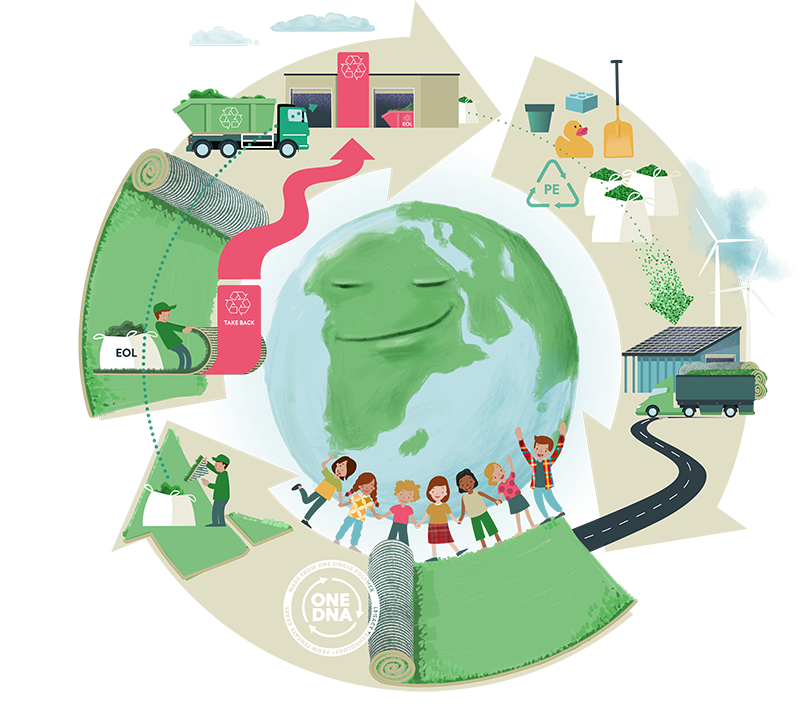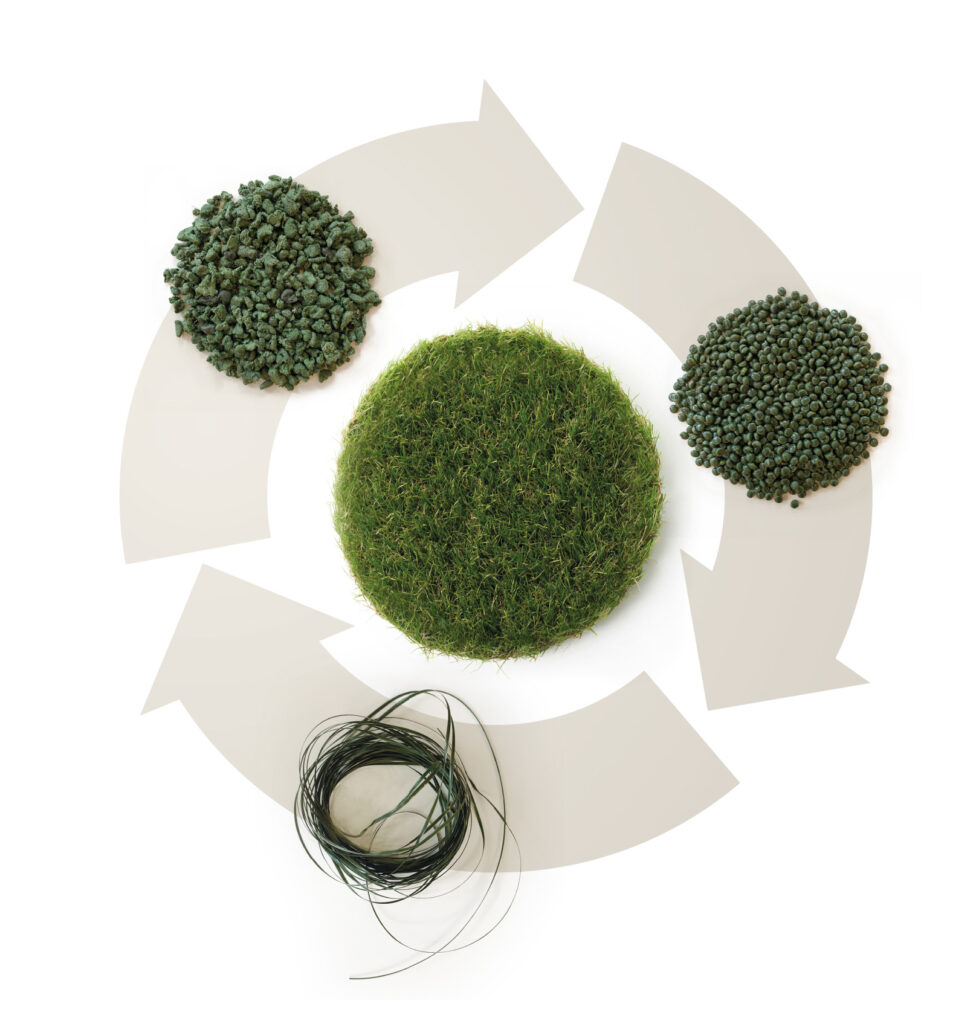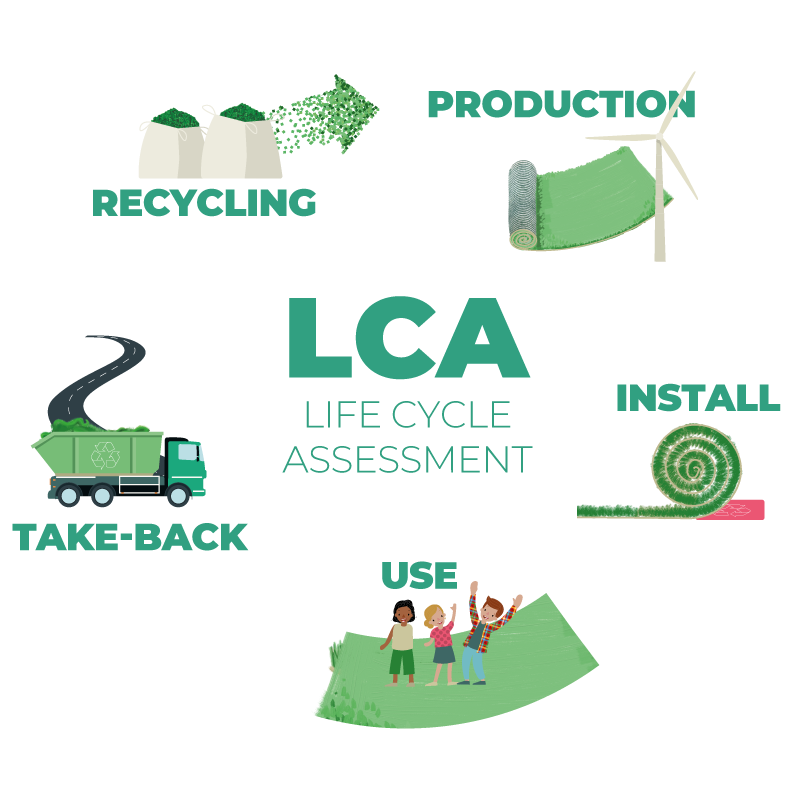Transparency
In an era where sustainability and environmental impact are high on the agenda, life cycle assessment (LCA) plays a crucial role in objectively assessing the environmental friendliness of artificial turf products. With an LCA, ONE-DNA™ artificial grass takes a significant step forward; this innovative product, designed with only one raw material, embodies the essence of circularity and offers significant benefits that excel in an LCA. Let’s delve deeper into why this monomaterial solution not only scores well in the LCA due to its many advantages but also sets an example of sustainable innovation in the industry.


The Importance of an LCA
The Life Cycle Assessment (LCA) provides complete transparency of environmental impacts throughout the entire life cycle of the product, from production to waste processing. This process helps identify opportunities for sustainability improvements and minimizes the ecological footprint. For products like artificial turf, where material selection and processing methods can significantly impact the environment, LCA is an indispensable tool.
- Essential for Informed Decision-Making
- Comparing Based on Environmental Performance
- Enhances Trust and Reputation
Benefits of ONE-DNA™ in the LCA
ONE-DNA™ artificial grass stands out with its unique approach of using only one type of polymer, polyethylene (PE), for both the fibers and the backing. This monomaterial strategy has several benefits in the LCA:
Simplified Recycling
By using only one type of material, the recycling process is significantly simplified, contributing to the circularity of the product.
Lower CO2 Emissions
The production of ONE-DNA™ results in significantly lower CO2 emissions due to more efficient manufacturing processes and reduced energy consumption.
Increased Circularity
ONE-DNA™ is designed with circularity in mind and can be converted into new raw materials for the production of new artificial turf or other PE products.

The LCA in Practice
The concrete results of life cycle analyses support the theoretical benefits of ONE-DNA™ artificial grass. These analyses show that the product outperforms on various environmental indicators such as natural resource use, energy consumption and waste generation. As a result, ONE-DNA™ not only provides practical and aesthetic benefits, but also makes a tangible contribution to the sustainability of the artificial turf industry.
It’s a prime example of how innovation and sustainability can go hand in hand, where we are able to deliver a product that has excellent LCA performance and significantly reduces the environmental impact of artificial turf. This not only makes ONE-DNA™ turf a smart choice for consumers and businesses looking for high quality, sustainable turf, but also sets a new standard for the industry as a whole, paving the way for a greener future.











